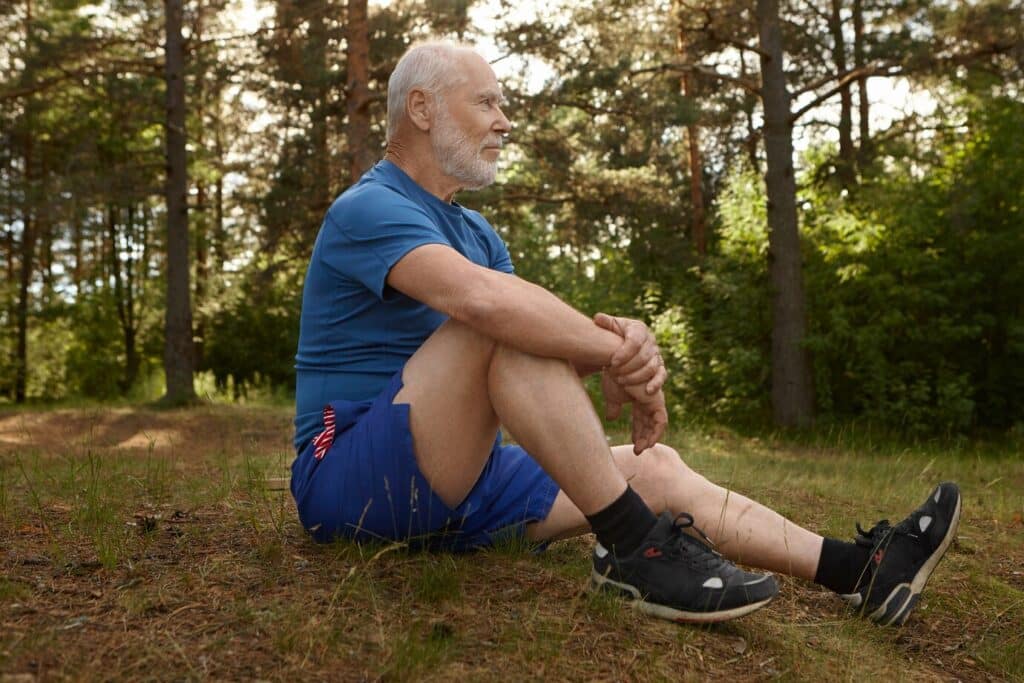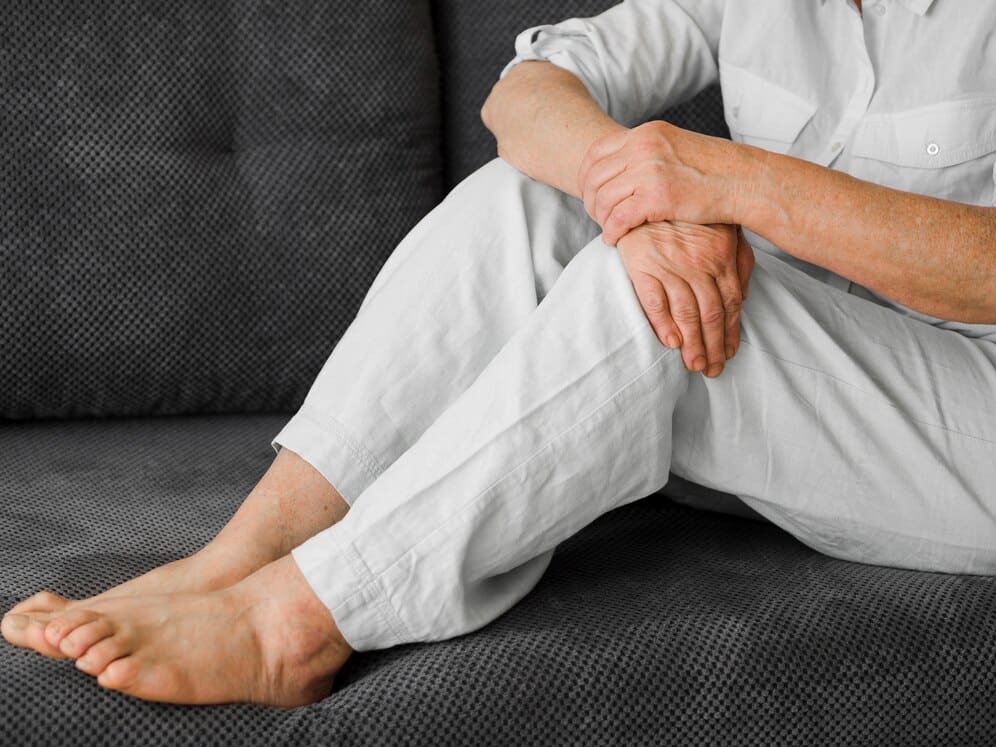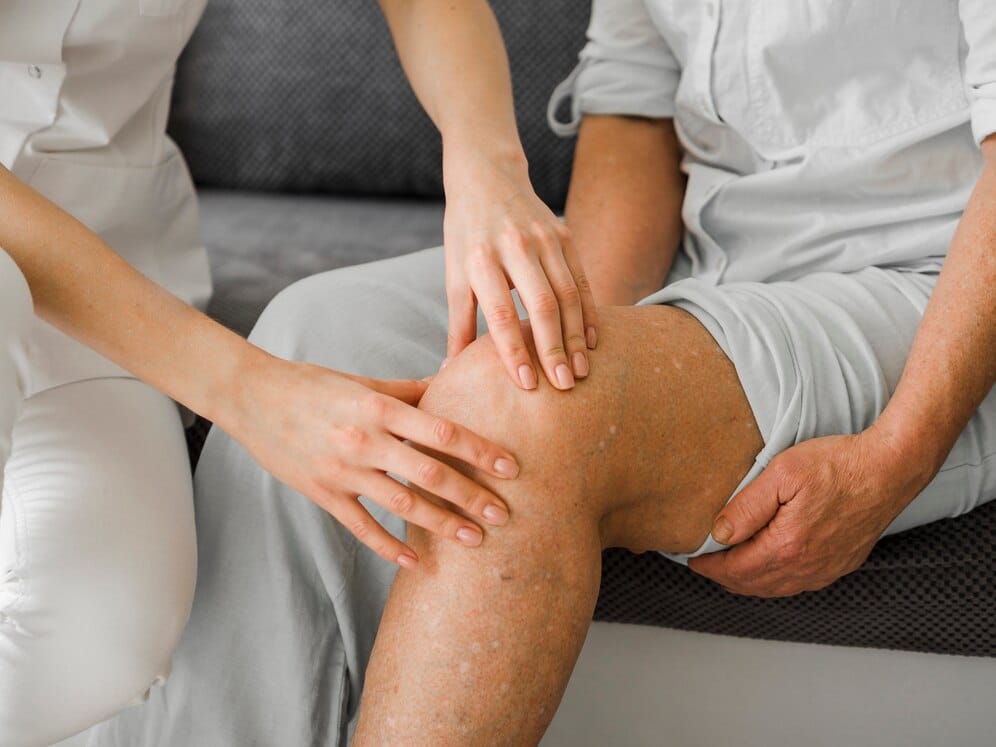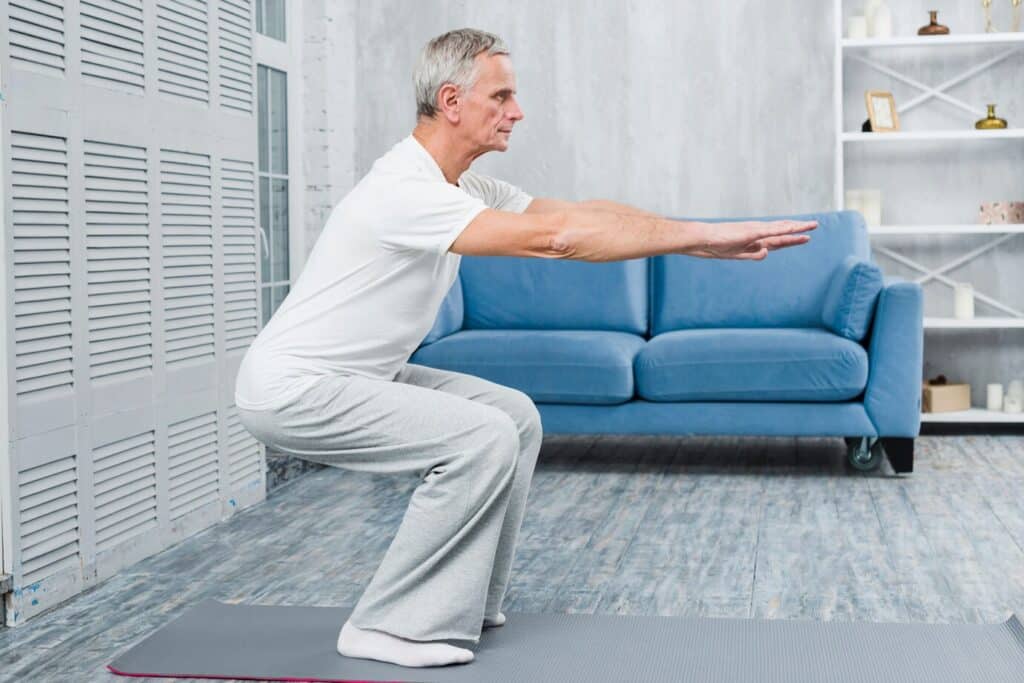Experiencing weak legs in the elderly is not just a part of aging—it’s a sign that the body may be calling for attention, care, and strategic support. From muscle loss and chronic conditions to nutrient deficiencies and sudden changes in mobility, the root causes of leg weakness can vary widely. Fortunately, there are effective solutions to help seniors regain their strength and independence.
In this guide, we’ll explore how diet, supplements, physical activity, and assistive support can improve leg function. Whether you’re a caregiver or an older adult yourself, understanding the causes of weakness and the available resources can make a meaningful difference in daily life.
Visit Westmont at San Miguel Ranch to explore how we support leg strength, mobility, and independence in our residents.
Understanding the Scope of Weak Legs in the Elderly
Roughly 40% of adults over 65 struggle with weak legs, leading to challenges in walking, balance, and daily tasks. When sudden loss of mobility in the legs in the elderly occurs, it can be alarming. This may be due to nerve damage, injury, or even a more serious underlying condition.
Age-related loss of muscle mass—known as sarcopenia—often accelerates these symptoms, especially if chronic illnesses like arthritis, diabetes, or cardiovascular disease are also present. According to the National Institute on Aging, maintaining muscle strength is vital to reducing fall risk and promoting a healthier lifestyle.
Learn more about the benefits of movement and regular exercise in this article: Understanding Weak Legs in Elderly Adults: Causes, Risks.
The Role of Diet: What to Eat for Weak Legs in the Elderly
Nutrition plays a pivotal role in reversing leg weakness. Knowing what to eat for weak legs in the elderly can prevent further muscle deterioration and promote regeneration.
| Food Category | Key Benefit |
| Lean Proteins (e.g., chicken, fish) | Helps rebuild muscle |
| Leafy Greens & Citrus Fruits | High in magnesium and vitamin C |
| Dairy & Fortified Alternatives | Great sources of calcium and vitamin D |
| Whole Grains & Legumes | Provide long-lasting energy and fiber |
You’ll find that the right food choices are essential for managing what deficiency causes weakness in the legs, particularly when it comes to protein and vitamin D. These deficiencies are common in older adults and can directly impact strength and coordination.
Check out our educational content on bone health: Breaking Down the Stages of Osteoporosis in Seniors
Key Nutrients and Supplements for Weak Legs in the Elderly
In addition to healthy meals, using supplements for weak legs in the elderly can help fill dietary gaps and improve recovery.
| Supplement | Why It’s Important |
| Vitamin D | Boosts calcium absorption and muscle function |
| Magnesium | Supports nerve and muscle coordination |
| Protein Powder | Assists with muscle recovery and mass retention |
| Creatine | May improve strength in older adults when paired with resistance training |
Before starting any supplement, it’s important to consult a healthcare professional. But with the right guidance, supplements can support a nutrition-based approach to combating weak legs in the elderly and improving stability.

What Deficiency Causes Weakness in the Legs?
Common deficiencies that lead to leg weakness include:
- Vitamin D Deficiency – Can reduce bone density and muscle strength.
- Iron Deficiency – Leads to fatigue and muscle weakness.
- Magnesium Deficiency – Affects nerve signal transmission, causing leg cramps or weakness.
- B12 Deficiency – Can cause nerve damage, tingling, and reduced leg coordination.
If your loved one is experiencing sudden loss of mobility in the legs in the elderly, a blood test may reveal an underlying nutritional issue. This allows for timely interventions that can restore mobility and reduce the risk of falls.
Age-Related Muscle Loss and Chronic Conditions
Sarcopenia becomes more common after age 60 and even more prevalent after age 80. Chronic conditions worsen this trend.
- Arthritis causes inflammation in joints.
- Diabetes can lead to neuropathy, affecting motor control.
- Heart Disease limits oxygen and nutrient supply to muscles.
- High blood pressure often restricts exercise, leading to further decline.
Learn how gentle movement helps manage these symptoms: Parent Care Tips: Managing Arthritis in Seniors
Additional lifestyle changes, like staying active and preventing excess weight, can improve outcomes. Read more: Facts About Overweight and Obesity in Seniors
Exercises to Improve Weak Legs in the Elderly
Incorporating the right exercises is essential for rebuilding strength and balance.
Gentle, Effective Movements:
- Seated Marching – Improves circulation and coordination.
- Standing Leg Lifts – Builds muscle without strain.
- Chair Squats – Strengthens quads and hips.
- Toe Taps – Boosts ankle flexibility and foot control.
Explore other movement options like balance exercises for seniors, which also support fall prevention.
Using Assistive Devices for Safety and Support
When weak legs in the elderly severely impact mobility, assistive devices provide confidence and independence. These include:
- Canes or quad canes for occasional balance loss
- Walkers for continuous support
- Rollators for added mobility outdoors
- Grab bars and handrails for stability in bathrooms
Choose devices based on your loved one’s unique needs and safety concerns. These tools help reduce the fear of falling and encourage consistent movement.
Professional Support and Personalized Care
At Westmont at San Miguel Ranch, our dedicated team works closely with residents and families to create personalized care plans for improving leg strength and independence.
From on-site physical therapy to dietary counseling, our holistic approach empowers seniors to maintain strength and stability. We also support caregivers in understanding how to assist loved ones experiencing sudden loss of mobility in the legs in the elderly.
You can schedule a care consultation or contact us directly at 619-271-4385 to learn how we can help.
Helpful Resources:
- National Institute on Aging – Exercise and Physical Activity
- Harvard Health – Essential Vitamins and Minerals

Reduced Mobility and Flexibility
Reclaim Strength and Mobility—Take the First Step Today
Weak legs in the elderly don’t have to be the end of independence. From knowing what deficiency causes weakness in the legs to understanding what to eat for weak legs in the elderly, there are clear steps you can take to support your health or your loved one’s.
Start with targeted nutrition, use supplements for weak legs in the elderly, and explore daily movement strategies that restore mobility and confidence. And if you or a family member has experienced a sudden loss of mobility in the legs in the elderly, professional help is essential for timely recovery.
Let Westmont at San Miguel Ranch be your trusted partner. Schedule a tour or call us at 619-271-4385 to see how we bring strength, support, and compassionate care together.
What Level of Care Do You Need?
Discover the level of care you or your family member requires.
Frequently Asked Questions
What disease causes weakness in the legs?
Weakness in the legs can be caused by a variety of conditions, including neurological disorders, circulation issues, or muscle-related diseases. Common causes include peripheral neuropathy, stroke, multiple sclerosis, and peripheral artery disease. In older adults, arthritis and degenerative joint conditions may also contribute to leg weakness. A thorough medical evaluation is essential to determine the underlying cause and the right treatment plan.
What medication is good for leg weakness?
The right medication for leg weakness depends on the condition causing it. For example, nerve pain may be treated with medications like gabapentin or pregabalin, while circulation issues may require blood thinners or cholesterol-lowering drugs. Muscle weakness linked to inflammation might respond to corticosteroids. Since causes vary, it’s important to consult a doctor before starting any medication.
What is the natural remedy for weak legs?
Natural remedies for weak legs often focus on lifestyle changes and supportive therapies. Gentle exercises, such as walking, yoga, or resistance training, can help strengthen muscles over time. A diet rich in protein, vitamins, and minerals supports muscle and bone health. Additionally, staying hydrated and maintaining a healthy weight can reduce strain on the legs.
Can the elderly regain leg strength in elderly?
Yes, elderly individuals can regain leg strength with proper care and exercise. Engaging in regular strength training, balance exercises, and flexibility routines can make a significant difference. Physical therapy may also be recommended to create a safe, tailored program. With consistency and support, many older adults can improve mobility and reduce fall risks.








